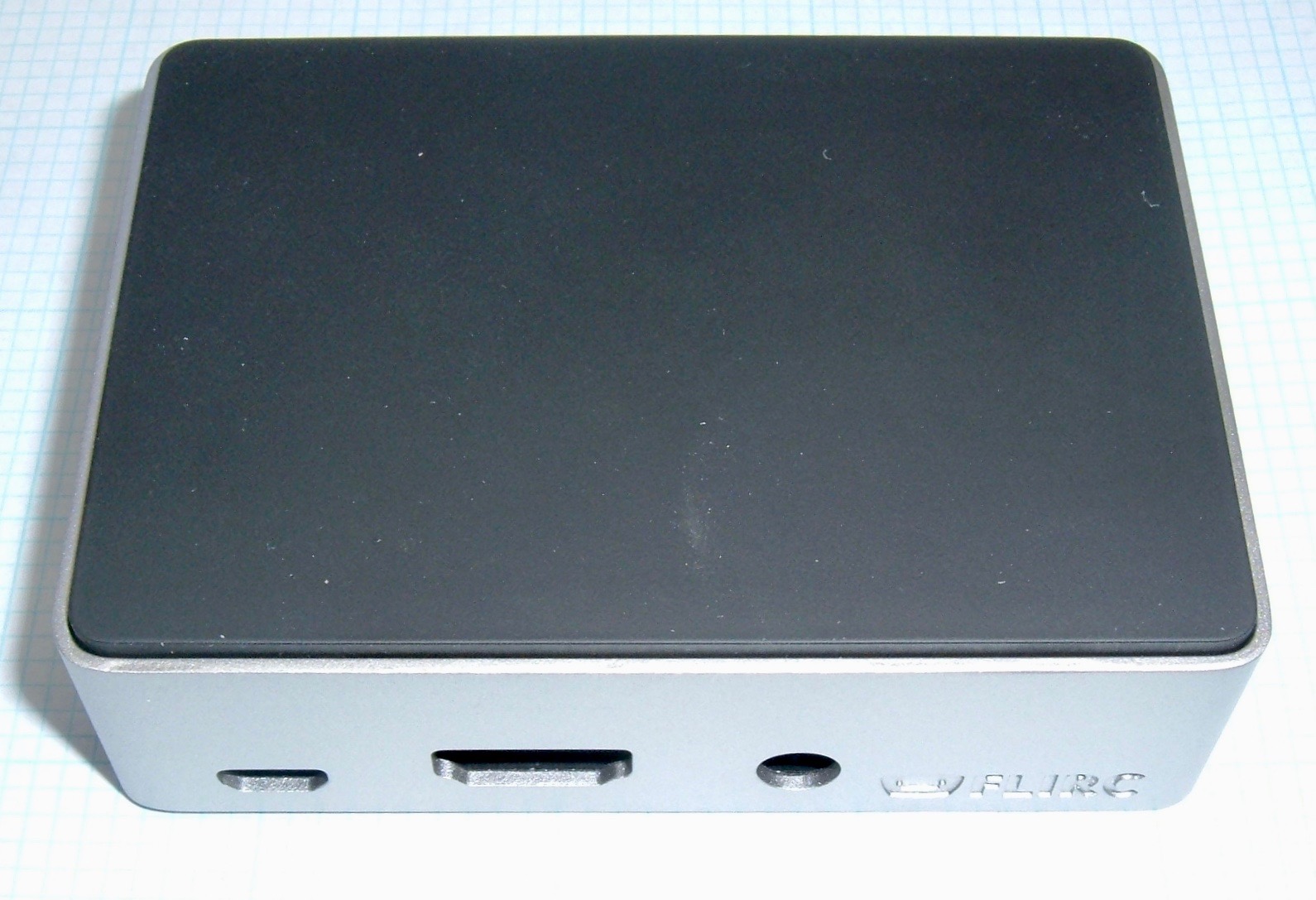

- #FLIRC RASPBERRY PI CASE UK UPDATE#
- #FLIRC RASPBERRY PI CASE UK FULL#
- #FLIRC RASPBERRY PI CASE UK PLUS#
However, as before using HATs are going to be a problem, perhaps more so given the shim is utilising more than just the header for power. This 30mm fan is connected via the GPIO header and from this can be temperature controlled, so that it doesn’t run all the time unlike those just wired to the 5V power rail. The Fan Shim sits snugly within a space carved out of the Pibow Coupé 4 case. The fan was tested with it sucking air in from the top and with it blowing it out. Like the Armour case, the fan is powered via the 5V supply on the GPIO header. The generic aluminium case with its ventilation holes allows bolts to be used to secure the 30mm fan to the case. Due to the fans being mounted flush against the metal of the enclosure, these fans will struggle to create any real airflow. Like the fanless version, most HATs won’t fit and other parts of the board are still exposed. The Armour twin fan radiator enclosure is very similar to the passive version, but with some of the fins removed to provide space to house two small (25mm) fans which connect to 5V on the GPIO header for power. I’ve touched previously on some active cooling options for the new Raspberry Pi 4, but there are now more options available. Unfortunately, you can’t use it with the Pimoroni Fan Shim to be installed, as the edge of the case presses against the button/switch on the Fan Shim The metal case would benefit from a set of rubber feet, to keep the metal chassis off delicate surfaces. These heatsinks were fitted during the testing with and without the fan installed. It was supplied with a set of 4 vaned heatsinks of varying sizes and a copper(?) plate for on top of the wireless module (according to the instructions).
#FLIRC RASPBERRY PI CASE UK FULL#
The Generic Aluminium case, secures the board within a full metal frame, providing ventilation holes on top, and a slot on the side to feed out a ribbon cable that might connect to the GPIO header. The Pibow is a little bit more flexible as you can continue to use HATs, whereas the Armour is more restrictive, though with some header extensions you probably could still accommodate some HATs if needed. The Armour radiator and Pibow Coupé cases leave a lot of the board exposed. These passive enclosures provide varying degrees of protection and access to the key features of the Raspberry Pi 4. So I’ve aimed for a fairly representative set of enclosures available (as of Aug 2019), many of which are generic and sold under various names: Passively Cooled Enclosures Whilst there are new cases appearing regularly, I don’t have the time and means to evaluate them all. See this new post to look at both temperatures and CPU thermal throttling.
#FLIRC RASPBERRY PI CASE UK UPDATE#
Update 4 September 2019: A further round of testing has been performed with various enclosures under load/stress. Will metal cases or electrical noise from fans have an impact? In a follow-up post, I have examined the impact on WiFi signal strength when the Raspberry Pi 4 is housed in different enclosures. Time to investigate and see if silence is still possible.
#FLIRC RASPBERRY PI CASE UK PLUS#
I think that’s a big plus for previous Raspberry Pi generations, it would be a shame to lose this ability with the Raspberry Pi 4.

I’m a proponent of silent, fanless, passive cooling solutions. Since the release of the Raspberry Pi 4, we’ve seen a rise in 3rd party enclosures, some of which clearly aim to tackle the issue with heat management. Whilst we await Software/Firmware updates from the Raspberry Pi team to reduce power usage and thus reduce temperatures, I’ve continued to investigate options for managing the Hot Raspberry Pi 4.


 0 kommentar(er)
0 kommentar(er)
